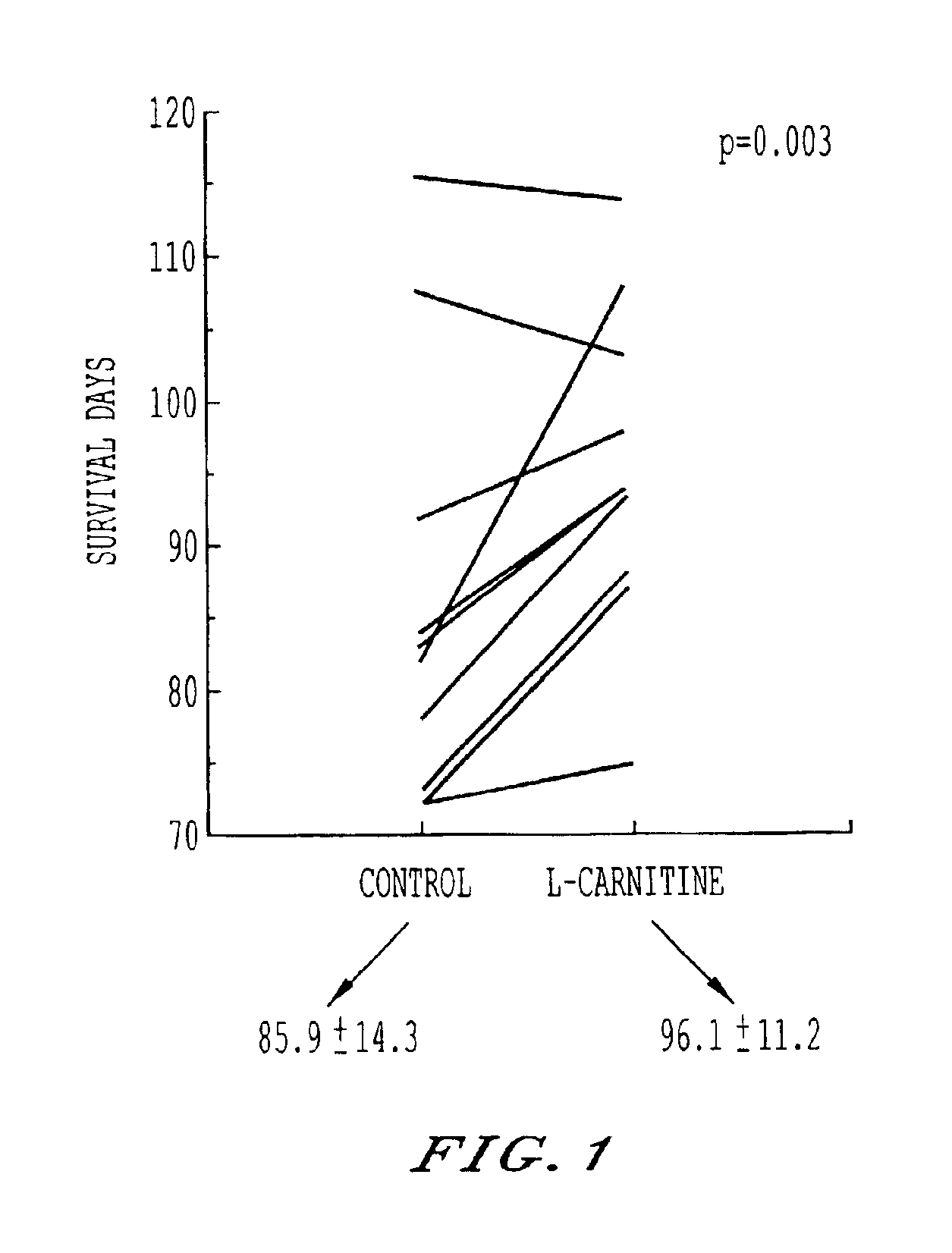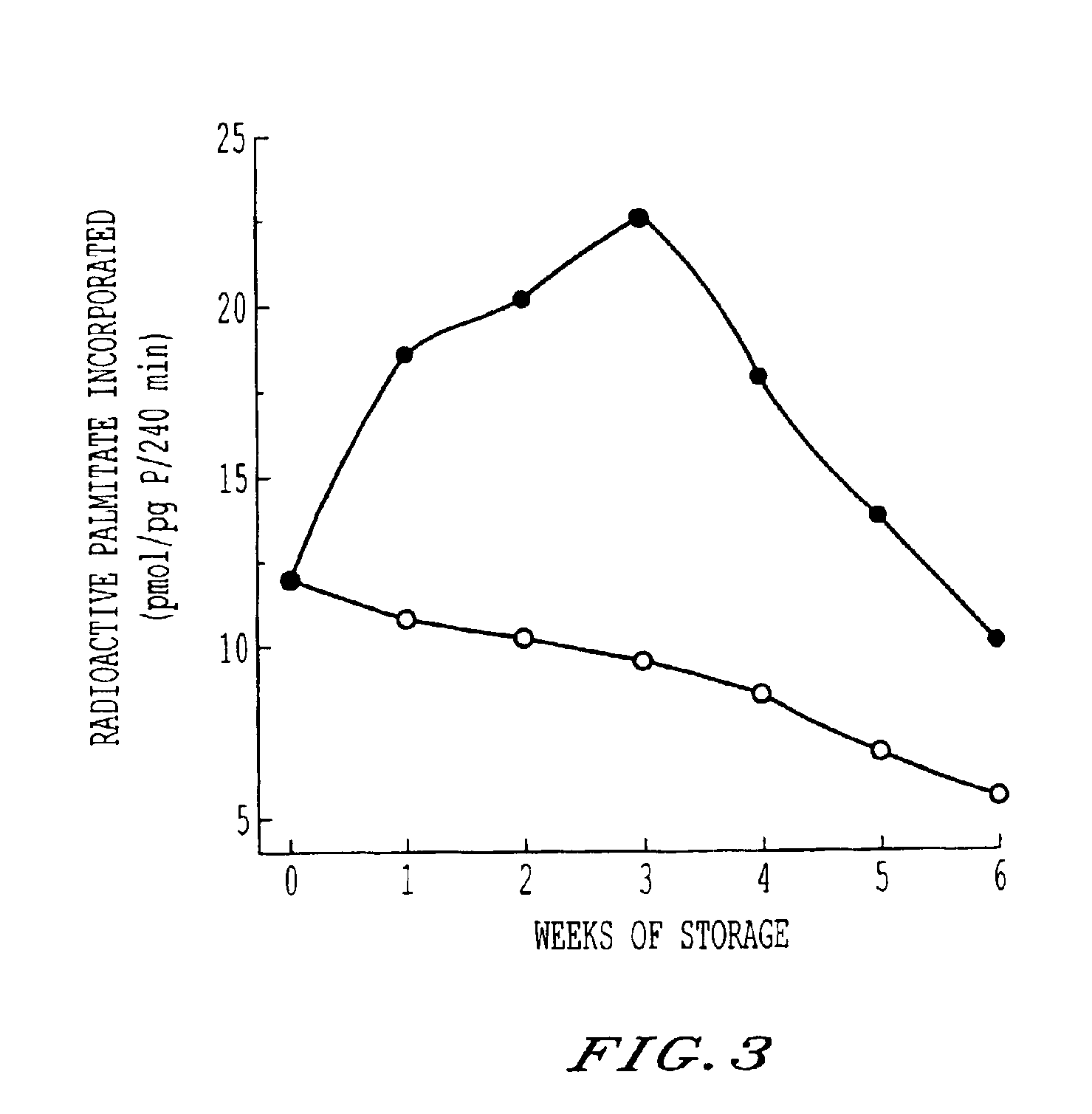Storage and maintenance of platelets
a technology for platelets and storage and maintenance, applied in the field of storage and maintenance of platelets, can solve the problems of limited storage period of rbcs (red blood cell concentrates, or rcc), and the reliability of existing supplies, and achieve the effect of reducing the number of days of storag
- Summary
- Abstract
- Description
- Claims
- Application Information
AI Technical Summary
Benefits of technology
Problems solved by technology
Method used
Image
Examples
Embodiment Construction
[0015]This invention employs L-carnitine, and its alkanoyl derivatives, as an agent supporting cell membrane maintenance and repair, and suppression of hemolysis, in blood products. Alkanoyl L-carnitines includes acetyl, butyryl, isobutyryl, valeryl, isovaleryl and particularly propionyl L-carnitine. Herein, reference is made to this family, generically, as LC, and exemplification is in terms of L-carnitine. The described alkanoyl L-carnitines, and their pharmalogically acceptable salts, however, may be used in place of L-carnitine.
[0016]The addition of LC to blood products, including RBCs and PCs, requires LC to be present in an amount effective to permit membrane maintenance, repair and hemolysis suppression. The research undertaken, including the examples set forth below, has demonstrated a minimum effective range for the products of most donors of about 0.25 mM-0.5 mM. The upper limit is more practical than physiological. Concentration as high as 50 mM or greater are easily tole...
PUM
| Property | Measurement | Unit |
|---|---|---|
| Molar density | aaaaa | aaaaa |
| Fraction | aaaaa | aaaaa |
| Volume | aaaaa | aaaaa |
Abstract
Description
Claims
Application Information
 Login to View More
Login to View More - R&D
- Intellectual Property
- Life Sciences
- Materials
- Tech Scout
- Unparalleled Data Quality
- Higher Quality Content
- 60% Fewer Hallucinations
Browse by: Latest US Patents, China's latest patents, Technical Efficacy Thesaurus, Application Domain, Technology Topic, Popular Technical Reports.
© 2025 PatSnap. All rights reserved.Legal|Privacy policy|Modern Slavery Act Transparency Statement|Sitemap|About US| Contact US: help@patsnap.com



